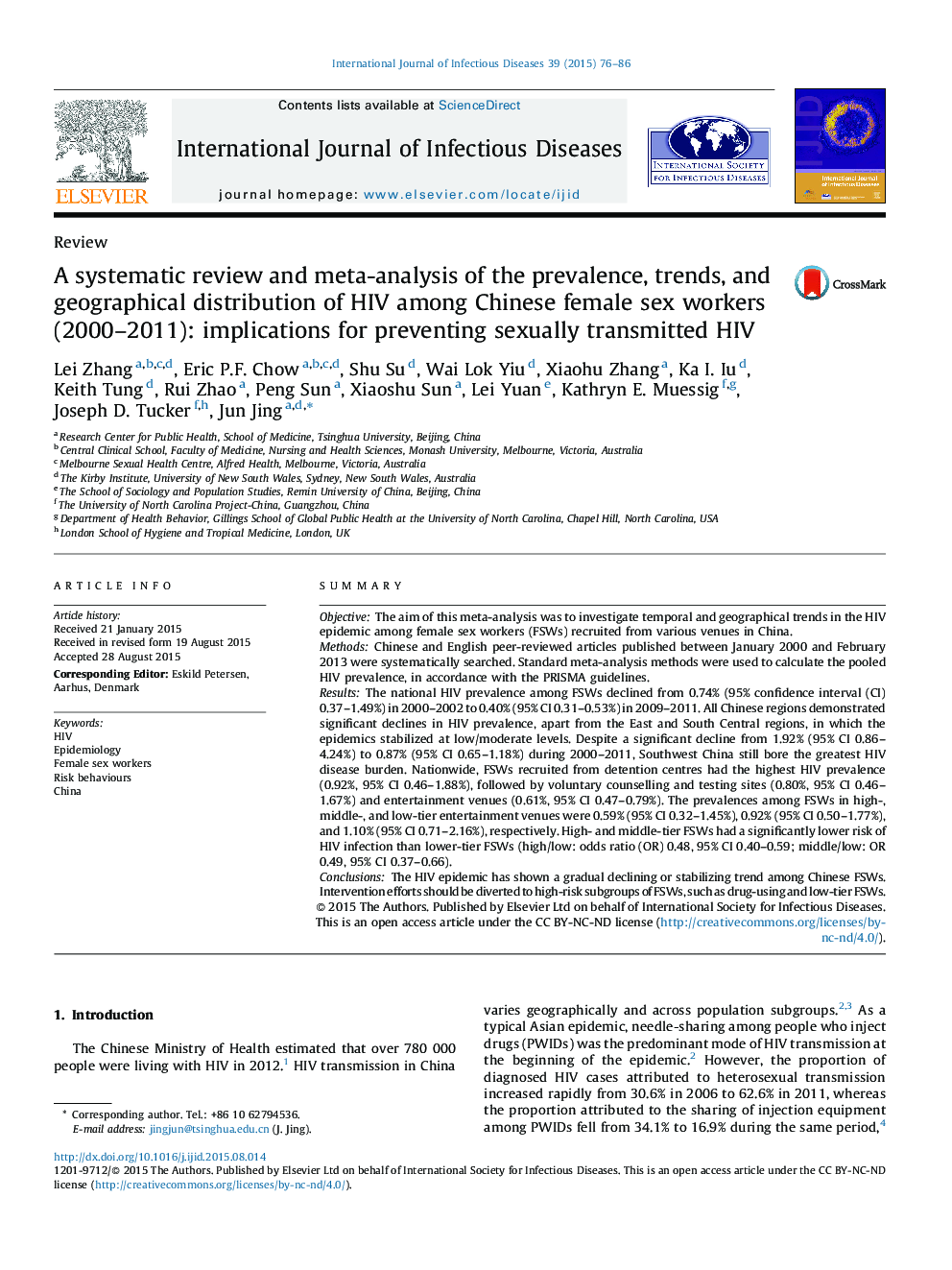| Article ID | Journal | Published Year | Pages | File Type |
|---|---|---|---|---|
| 3362016 | International Journal of Infectious Diseases | 2015 | 11 Pages |
•The national HIV prevalence among female sex workers (FSWs) declined to 0.40% (0.31–0.53%) in 2011.•Southwest China bore the greatest HIV prevalence compared to the other Chinese regions.•FSWs recruited from detention centres had the highest HIV prevalence compared to those from other venues.•FSWs working in low-tier entertainment venues are at a higher risk of HIV infection.
SummaryObjectiveThe aim of this meta-analysis was to investigate temporal and geographical trends in the HIV epidemic among female sex workers (FSWs) recruited from various venues in China.MethodsChinese and English peer-reviewed articles published between January 2000 and February 2013 were systematically searched. Standard meta-analysis methods were used to calculate the pooled HIV prevalence, in accordance with the PRISMA guidelines.ResultsThe national HIV prevalence among FSWs declined from 0.74% (95% confidence interval (CI) 0.37–1.49%) in 2000–2002 to 0.40% (95% CI 0.31–0.53%) in 2009–2011. All Chinese regions demonstrated significant declines in HIV prevalence, apart from the East and South Central regions, in which the epidemics stabilized at low/moderate levels. Despite a significant decline from 1.92% (95% CI 0.86–4.24%) to 0.87% (95% CI 0.65–1.18%) during 2000–2011, Southwest China still bore the greatest HIV disease burden. Nationwide, FSWs recruited from detention centres had the highest HIV prevalence (0.92%, 95% CI 0.46–1.88%), followed by voluntary counselling and testing sites (0.80%, 95% CI 0.46–1.67%) and entertainment venues (0.61%, 95% CI 0.47–0.79%). The prevalences among FSWs in high-, middle-, and low-tier entertainment venues were 0.59% (95% CI 0.32–1.45%), 0.92% (95% CI 0.50–1.77%), and 1.10% (95% CI 0.71–2.16%), respectively. High- and middle-tier FSWs had a significantly lower risk of HIV infection than lower-tier FSWs (high/low: odds ratio (OR) 0.48, 95% CI 0.40–0.59; middle/low: OR 0.49, 95% CI 0.37–0.66).ConclusionsThe HIV epidemic has shown a gradual declining or stabilizing trend among Chinese FSWs. Intervention efforts should be diverted to high-risk subgroups of FSWs, such as drug-using and low-tier FSWs.
